London Guitar Repairs
London Guitar Repairs & setups where you’ll find experts in all aspects of guitar and amp repair! At London Guitar Repair we aim to offer the best repair, upgrade, and maintenance services for electric, acoustic, and bass guitars in the London area. Give us a call or stop by today and put our decades of guitar and bass fixing, sweetening, tweaking, modifying and general miracle working to work for YOU!. Most frequently we provide a range of standard set ups, string changing, fret dressing and parts upgrading service. Although we carry out all types of guitar repairs we can also help you decide the best route for upgrading your instrument. London Guitar Repair has been serving the London and greater London guitarist community for 25 happy years, trust our certified technicians to keep your instruments and equipment in peak playing condition with outstanding expert repairs, upgrades and maintenance.
Perfect work, deiverd FAST! Terry is a great guy, very knowledgeable, he is skilled, super professional, honest, quick and affordable. What more could we ask for when looking for London’s best guitar repair & setup. I whole heartedly recommend his services. Feel’s like I have a new instrument…Jon Ford Guitar Player Londonl

London Guitar Repair
Guitar Repairs London | Amp Repairs | Guitar Setup, Maintenance and Modifications
[one_third]
Electric Guitar Repair
Electric Guitar repair Guitar Intonation, Truss Rod Adjustment, find guitar repair/replacement part, Pickup Repair, Bridge Repair. Finish Repair. Intonation. Pickup Repair. Eliminate. Full Electric Guitar overhall.
[/one_third]
[one_third]
Acoustic Guitar Repair
London Acoustic Guitar Repair love working on acoustic guitars. We offer Personalized Set Up’s including changing strings Action Adjustments, Slot Correction, Replacement Parts, Fret Polishing,
[/one_third]
[one_third_last]
Amp Repair
Expert repair and restoration of vintage tube guitar amps, modern amps.schematic diagrams. Recent repairs include Gibson GA-19RVT, 64 Fender Vibroverb, Marshall 1987
& Fender Bassman 100
[/one_third_last]
[one_third]
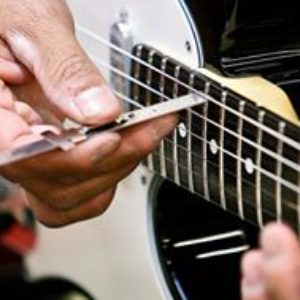
Guitar Repair
[/one_third]
[one_third]
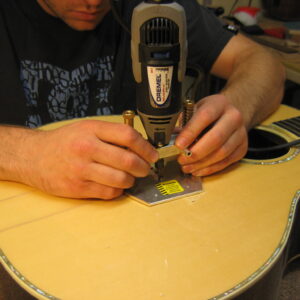
Guitar Repairs London
[/one_third]
[one_third_last]

Guitar Repair | Amp Repairs London
[/one_third_last]
Acoustic or electric guitar maintenance, restoration and repair by a highly experienced guitar tech’s in London. London Guitar Repairs is the place for repairs, setups and modifications for your guitar TODAY! Guitar Setups, re-fretting, Headstock repairs and full re-wires, spares and custom parts.
[one_third]

London Guitar Repairs, Maintenance and Modifications
[/one_third]
[one_third]
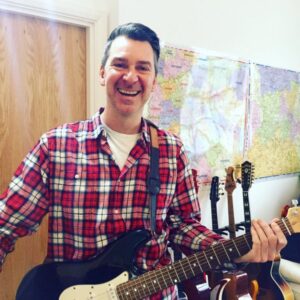
Guitar Setup
[/one_third]
[one_third_last]
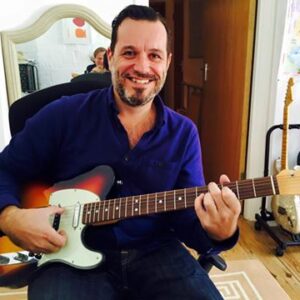
Guitar London
[/one_third_last]
Guitar Repair London – Acoustic and Electric Guitar Repair and Building
Whatever the detail, most guitar work comes down to either:
[list line=”yes” style=”style2″]
- Change the Strings & Fixing a fault – Adjusting Action and Intonation
- Acoustic, electric and bass guitars – repairs, setups, maintenance and customising
- Pro-set up: Electric & Acoustic instruments.
- Improving on the original – Structural work – broken headstock repairs, re-glue braces & bridges.
- All types of fretwork including fret dressing and re-fretting
- Personal setup Supply and fit of hundreds of different parts.
- Experimenting with something new
- Adjusting the Neck, Adjust the Truss Rod, Adjust the Bridge Height, Check the Nut Height, Check the Electronics
- string buzzing, lowering action, fixing cracks, setting up guitars for drop tuning
- repair, setup, and customizing services for guitars and all other types of fretted indtruments
- Adjust the action of the guitar strings – Check the angle between your neck and your body
- Guitar repair and setup specialist, based in London
London Electric and Acoustic Guitar Setup. For Guitar Repairs Call James – Tel: 07957230354
Before recommending a repair solution, Terry always first discusses a musician’s needs, playing style, budget—the total situation or context.

Guitar Repairs,Guitar Repair, Guitar Setups, Re-fretting, Headstock repairs, Bass guitar repairs, Guitar Pickups, electric guitar repairs, acoustic guitar repairs, London

Acoustic, acoustic Electric Guitar Repair, acoustic Guitar Repair, acoustic guitar repairs, Acoustic Guitar Strings Lowered, amp repairs, Bass, Bass guitar repairs, Bass guitar setup, bias, Body Binding, Bridge Repair, change guitar strings, change strings, Classical guitar, electric, Electric Guitar Repair, electric guitar repairs, Electronics, fender, Finish Repair, fixing cracks, Fret Repair, Fretboard Binding, Fretboard Repair, Full Electric Guitar Set up, General Care and Maintenance, Gibson, guitar hub, guitar intonation, guitar intonation London, Guitar Pickups, Guitar Repair, Guitar Repairs, guitar repairs near me, guitar repairs near me London, Guitar Setups, guitar strings, Headstock repairs, Intonation Adjustment, london, lowering action, modding, mods, Neck Repair, new strings, Nut Repair, pedal fixing, Pick-up Repair, pots replace, Professional Guitar Repairs. Electric, Re-fretting, repair services, Restring an electric Guitar, Restringing, revalve, setup, Setup for Drop Tunings, Strap Button Repair, string buzzing, true bypass, Truss Rod Adjustment, Tuner Repair
London Guitar Repairs,Guitar Repair London, Guitar Repair, Guitar Setups, electric guitar repairs, acoustic guitar repairs
[rule_top]
Build Log – Final version of low cost pedal board for an LGA student – User Guide
Terry Relph-Knight copyright reserved
Original proposal 19/05/16
This document 22/04/17
This board was built for a client with no previous experience of foot pedal effects and who therefore had no existing pedals to incorporate. The brief for this pedal board was to build something that provided a basic range of effects for the lowest possible price.
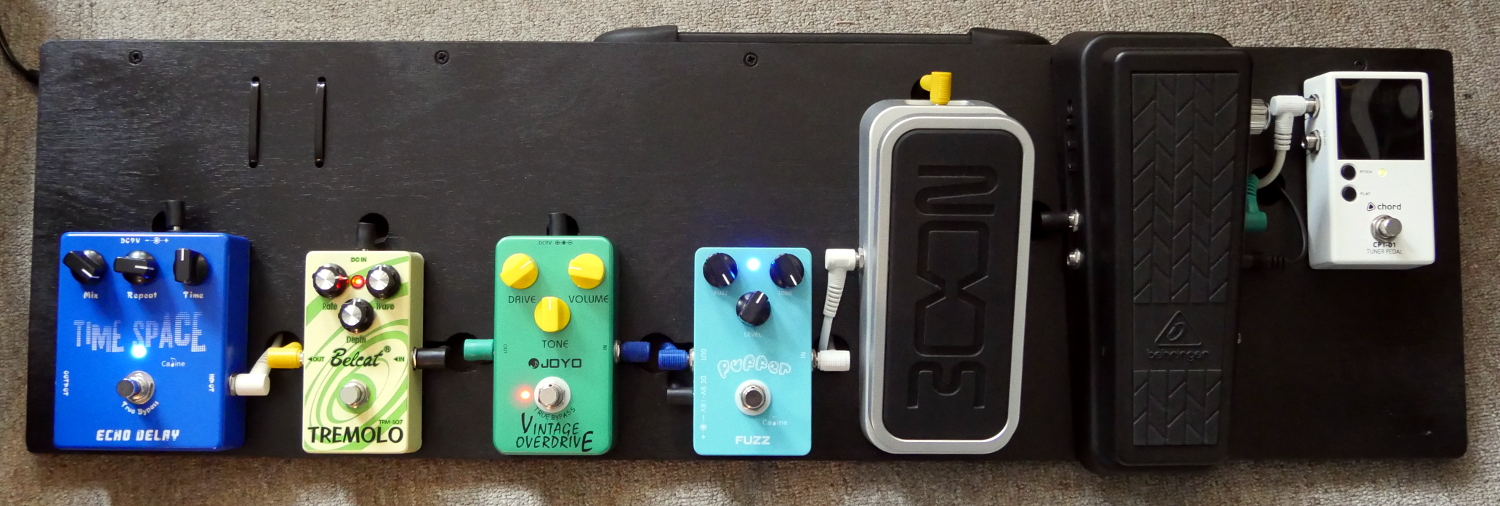
The effects chosen were – a Chord Tuner CPT-01, a Behringer Hellbabe Wah, a Zoom expression Volume, a Caline Puffer Fuzz, a JOYO JF1 Overdrive, a Belcat Tremolo and a Caline Time Space Echo Delay. The majority of these are budget Chinese pedals, copies of industry standards. For example the Fuzz is a copy of a silicon Fuzz Face, the Overdrive is a copy of the Tube Screamer and the German designed / Chinese made Wah Wah is based on the Dunlop Dime Cry Baby from Hell. Some of these pedals were modified to improve their performance.
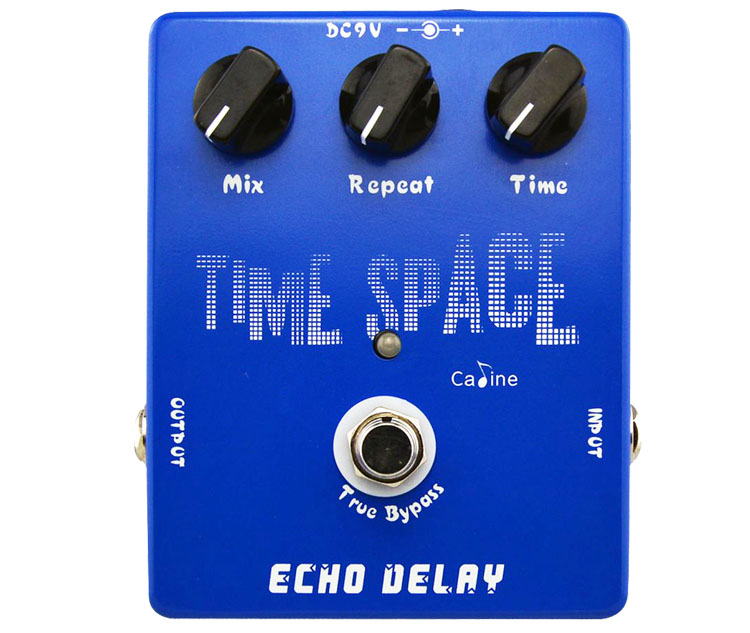
Nine volt power was provided by a Diago PS9 switching power supply and to control costs all the pedals were mounted onto a length of black painted ply by two of their baseplate screws. The pedals were laid out in a single row, providing the easiest access to all their foot switches. A length of two by one wood batten was fitted along the back of the plywood board to raise the surface at an angle. The pedal board base was painted black and a carrying handle was fitted to the rear batten.
A note about volume
Overall volume from this pedal board can be controlled by the volume pedal. The volume pedal is wired just before the delay pedal so that any delay trails will still be audible after the signal has been shut off by the volume pedal.
Otherwise some of the pedals have Level controls and some don’t. Usually pedal level controls are used to set the level, when the pedal is engaged using the foot switch, to be equivalent to the volume level when the pedal is bypassed. Level controls are often found on distortion and fuzz pedals because the apparent volume of pedal output is significantly affected by the settings of the distortion controls. Other pedals such as tremolo or delay may not have level controls because it is assumed that the various settings of the pedal controls will not affect the apparent volume.
The Behringer Wah Wah pedal is unusual as most Wah pedals have no volume controls, or any controls other than the moveable foot treadle. On this Wah there is a side mounted switch that turns on a boost that is active when the wah is active. The switch can be activated by a sideways tap of the foot. The boost level is set by a side mounted rotary control.
The Tuner is set up to mute the guitar signal altogether when the tuner is activated. However if the Fuzz pedal is set for maximum gain and the Tuner is active an odd pulsing hum can be heard. This occurs because the classic Fuzz Face circuit is designed the have its input driven directly from a guitar. With the Tuner in mute the Fuzz is disconnected with its input open circuit and it will operate in a very high gain mode. In this mode it picks up even the slightest local electrical disturbance and the pulsing of the Tuner circuit is enough to cause this odd sound.
Budget effects pedal board layout and connections
Connection order
Guitar in to Tuner to Fuzz (silicon Fuzz Face) – 60cm patch cable
Fuzz to overdrive (Tube Screamer) – 8cm patch cable
Overdrive to Wah Wah (Cry Baby) – 60cm patch cable
Wah Wah to Tremolo(Boss TR2 sine to square modulation, VCA modulator) – 60cm patch cable
Tremolo to Volume – 60cm patch cable
Volume to Delay 25 to 600mS digital delay with filtered repeat. – 60cm patch cable
Delay out to amplifier
Physical order
Physically it makes sense to put the Volume next to the Wah making it easy to shift the foot from one treadle to the other. The Tuner is set forwards of the Wah to allow access to the side mounted boost switch.
So the physical order from left to right is – Caline Time Space Echo Delay – Belcat Tremolo – JOYO JF1 Overdrive – Caline Puffer Fuzz – Zoom expression Volume – Behringer Hellbabe Wah – Chord Tuner CPT-01
All the pedals are powered by the Diago PS9 switching power supply through the Diago 6 way daisy chain power distribution cable, with an extender cable to reach the Wah pedal power input jack. The Diago PS9 is rated at a maximum of 1,000 mA output current. All six pedals only draw 64.5mA. The PS9 will auto switch for mains input from 110 to 240V, 50 to 60Hz.
TUNER
The Chord CPT-01 Chromatic Guitar Tuner has two outputs, one labelled Output, is muted when the tuner is engaged, the other labelled Bypass, is not. Both outputs go to true mechanical bypass when the tuner is not engaged.
Two push buttons offer control over the pitch settings for the tuner;
Pitch – repeated depressions of the Pitch button cycles between 440 to 445 and then 436 to 439 Hz in one Hz steps. These steps are indicated on the tuners display by the numbers 0 to 5 and then 6 to 9. Although the ‘standard’ concert pitch is A 440 small variations in this ‘standard’ are still in use around the world. Most guitarists would use A 440.
Flat – this button is of more use to guitarists, as it allows flattening the tuning in one semitone steps by up to three semitones. A number of famous players, Jimi Hendrix and Stevie Ray Vaughan for example, achieved their signature tones by tuning down a half step.
Tuning range – 27.5Hz to 4186Hz or A0 to C8
Accuracy – plus or minus 1 cent
Pitch shift for A4 – 436 to 445Hz
Active current draw – 9.6mA to 13mA max
Input impedance – unknown
Output impedance – unknown
FUZZ
A traditional style Fuzz (like a Fuzz Face) only works correctly if a passive guitar is connected directly to its input. In this pedal board the Fuzz is connected after the Tuner. When the Tuner is bypassed the guitar will be connected directly to the Fuzz.
The Caline Puffer Fuzz is a slightly modified Fuzz Face circuit using silicon transistors. I had to modify it myself by adding a bias trimmer to get it to work properly. It has three controls and a mechanical true bypass footswitch. The controls are;
Fuzz – sets the amount of clipping or sustain
Level – sets the level or volume of the signal coming out of the pedal
Tone – isn’t a conventional treble filter tone control, rather it alters the response of the pedal to the input signal. Turning it up will tend to increase sustain and increase the degree of interactivity with the volume control on the guitar. At full clockwise this control is at zero and the pedal acts like a classic Fuzz Face.
Fuzz pedals produce heavy clipping, reducing note dynamics, but greatly increasing sustain. One of the earliest transistor based foot pedal effects, they became popular in the 1960’s and have remained in use as a signature electric guitar tone ever since. They are often used with a Wah Wah pedal. These two pedals formed the basis of Jimi Hendrix’s tone as later copied by Eric Clapton and numerous other guitarists. A feature of the Fuzz Face is that it interacts with the guitars volume control making it possible to go from full on Fuzz to an almost clean tone, just by turning down the guitar volume.
Usual settings for a Fuzz Face are Fuzz at maximum (and in the case of this pedal, Tone at maximum) and set Level to balance with the bypassed volume.
The order in which Fuzz and Wah should be used is very controversial. It is always claimed that Jimi Hendrix ran his guitar into his Wah Wah pedal and the output of that went in to the Fuzz Face. This way round produces a less consistent fuzz tone as the signal to the fuzz tends to drop off as the wah is swept down. It also tends to suffer from instability as the output of the wah interacts with the input of the fuzz. This order probably works best when the amplifier itself is also producing distortion.
The other way around – fuzz into wah – produces a much more pronounced and consistent tone and since the guitar is connected directly to the fuzz input, all of the fabled Fuzz Face interaction with the guitar volume is available. However some players feel the effect of the Wah is then too exaggerated and that the low end of the guitar sound is lost.
Fuzz Modifications – The original Fuzz Face circuit appears to have been cobbled together rather than designed. In the 1960’s few people knew very much about correct design principles for transistors. The original germanium transistors available at the time were unreliable, hugely variable, temperature sensitive and leaked like sieves. Also at this point in time it is almost impossible to know how the designers of the Fuzz Face intended it to act. It is acknowledged that due to the simple design and the huge variation in germanium transistors, no two Fuzz Faces ever sounded exactly the same. Apparently, famous users would go through a shops entire stock of Fuzz Faces to pick out those that sounded any good.
If we assume that the aim of the circuit is for the collector of output transistor to be biased at around one half the supply voltage (around 4.5V or actually a little higher to allow for drop across the output transistor an its emitter resistor) to produce something close to square wave clipping, then the only way to make sure of this is to fit a trimmer and adjust it so that the individual Fuzz Face is biased to just above 4.5V for the most symmetrical square wave. This is something that even now the manufacturers do not do.
I modified the Puffer by removing the split collector load resistors of 4K7 and 22K (not the values commonly used in a Fuzz Face) and replacing them with a 330 ohm and a 10K trimmer in series with an 8K2.
Input impedance – a few 1000 ohms up to 100K (Tone at minimum)
Output impedance – maximum of 25K
Active current draw – 1.83mA measured
OVERDRIVE
The JOYO JF1 overdrive is a copy of the Ibanez Tube Screamer. The Tube Screamer doesn’t produce as extreme a clipping distortion as a Fuzz pedal and can be adjusted from a light rhythm crunch to a heavier lead tone. It maintains some of the input note dynamics and as well as the distortion, it introduces a mild mid boost. It was originally intended to mimic the effects of over driving a valve guitar amplifier. It has three controls and a mechanical ‘true’ bypass foot switch (original Ibanez Tube Screamer’s use electronic bypass switching) –
Drive – the drive control sets the amount of clipping distortion, or sustain
Tone – is a simple treble roll-off tone control
Volume – sets the level or volume of the signal coming out of the pedal
Input impedance – 500K
Output impedance – 10K
Active current draw – 7mA (6.26mA measured)
WAH WAH
Another foot pedal effect from the late 60’s, the Wah Wah swings in and out of fashion, but is an instantly recognisable tone.
The Behringer Hell Babe HB01 circuit is based on the original Cry Baby Wah and seems to copy many of the extra features of the Dunlop DB-01 Dimebag Cry Baby From Hell. In addition, like the Morley wah pedals, it uses optical control of the wah sweep, eliminating the control pot wear that is a weakness of classic wah pedals. Bypass switching is also optical – the wah is activated as soon as the treadle is moved away from the heal down position. While the wah is activated the Red LED at the heel of the pedal lights. The treadle is spring loaded, so it always returns to the heal down position. The bypass switching has a variable time delay – set by a trimmer accessed from underneath the pedal – so that momentary dips into the heal down position won’t immediately flip to bypass.
The original Cry Baby circuit has particular characteristics, that many later introductions, such as the Morley Wah, do not have. The Cry Baby circuit uses an tuned circuit composed of an inductor and a capacitor. At its lowest point in the frequency sweep this circuit has relatively high Q – it produces a sharp peak in the response. It also produces some distortion. As the Wah treadle is depressed to sweep up to the highest frequencies the Q is reduced – the response opens out, and distortion is reduced.
In addition to providing the basic wah function the Behringer pedal has these extra features –
Range – a six way rotary range switch that switches in different values for the resonating capacitor
Range Heel Down Toe Down**
1 .. 440 Hz 1.5 kHz to 2.2 kHz
2 .. 400 Hz 1.3 kHz to 1.9 kHz
3 .. 375 Hz 1.2 kHz to 1.8 kHz
4 .. 345 Hz 1.0 kHz to 1.6 kHz
5 .. 295 Hz 750 Hz to 1.4 kHz
6 .. 250 Hz 1.2 kHz
** this indicates the effect of the Fine control on the toe down frequency
Boost – a side push switch for up to +12dB clean boost after the wah (this boost is active only when the wah is active), the amount of boost is set by the forward control on the left side of the pedal. When boost is activated the Yellow LED at the heel end of the pedals lights.
Q – the Q (Q is a radio term and stands for Quality of a tuned circuit) control, the middle of the three on the left side of the pedal, sets how pronounced or narrow the filter peak is.
Fine – the Fine control (the rearmost on the side of the pedal) fine tunes the upper limit (toe down) of the wah sweep. Used in conjunction with the Range control the user can fine tune the lower and upper points of the wah sweep.
Behringer provide few technical details so all specifications shown here are from the Dunlop DB-01 Dimebag Cry Baby From Hell, although mostly confirmed against the Behringer circuit diagram –
Input impedance 1 MΩ
Output impedance <1 kΩ
Noise Floor* -102 dBV
Max Gain at fc 15 dB
Boost Range 0.1 to 17 dB
BypassBuffered
Current Draw 8.5mA with boost on (2.5 mA for the Dunlop)
Power Supply 9 volts DC
Modifications – Out of the box the Behringer HB01 had very poor control characteristics. The auto-on switching was very choppy and the usable wah range was compressed into the final few degrees at the toe down position.
Various mods are shown on YouTube, but the most sensible recommendation is to extend the tiny triangle cut out (maybe 2.5mm in length) in the black fibre board optical shutter, which mechanically does not come into play until almost full toe down (and that is exactly what it sounds like – nothing happens until nearly full toe down).
I extended the triangle cut out to 6mm in length, while maintaining the general triangular shape and now get a really full range of sweep from the pedal.
TREMOLO
Tremolo is one of the oldest effects and, apart from the very early electro-mechanical DeArmond tremolo, was often built in to guitar amplifiers of the 1960s and still is today.
For an effect that produces a simple cyclic change in volume it is surprisingly atmospheric and effective.
The Belcat is probably based on a Boss TR-2 (modulation is via a SIL package M5207L01 a dual linear VCA chip) with the exception that the Boss FET switched bypass has been replaced with a mechanical ‘true’ bypass foot switch. It has three controls;
Rate – for the speed of the tremolo
Depth – for the depth of modulation
Wave – which fades the shape of the modulation from a triangle (smooth) to a square (choppy)
Triangle is fully anti-clockwise, square fully clockwise. Apart from changing the aggression of the tremolo, this allows an approximation of the different tremolo sounds available from different amplifiers. Some vintage amplifiers used a smooth modulation circuit, others have a choppier tremolo.
Input impedance – 1Meg
Output impedance – 1K
Active current draw – 20mA (8mA measured)
LFO rate – 90mS to 900mS or roughly 11Hz to 1.1Hz
Modifications – This copy of the Boss TR-2 tremolo, which has TRM-557 Rev A 2009,06,17 printed on the PCB, has appeared under various brands such as Rogue and Crossfire apparently has a persistent assembly fault. Users complain that the Depth control doesn’t seem to do much at the low end of its rotation and the effect of the Wave control is also restricted so that all the action is in the first part of the rotation. The apparent cause is that one of the two controls is linear and the other log and they have been fitted in the wrong positions. You would expect that the Rate and Wave controls would be linear pots and the Depth would be log. That is how the pots in the Belcat are configured so they shouldn’t need changing.
Looking at the ‘official’ Boss schematic for the TR-2 it shows Rate as 100K lin, Wave as 100K log and Depth as 100K lin, which is weird. It may be that this schematic is wrong and that the ‘modders’ have simply been copying this error.
VOLUME
There isn’t much choice in volume pedals, particularly at the budget end of the market. Ernie Ball makes a wide range and Jim Dunlop makes several variations. These are very well engineered, solidly built pedals, costing between £95 and £130 or more. There is one cheap plastic pedal I have found, the Spartan Music 1511A stereo volume pedal. https://spartanmusic.co.uk/collections/wah-expression/products/guitar-volume-pedal
I opted to buy a Zoom FP02M Expression pedal Expression pedal (cast magnesium alloy body and curved nylon rack and pinion gear driving an S law 100K pot) and to modify it into a volume pedal by adding an extra jack socket and a curve tweaking resistor. The modified Zoom actually works very well as volume pedal.
Fortunately the Behringer HB01 Wah is active buffered bypass and the Zoom is downstream of the wah, so there should be no loading problems from the 100K pot in the Zoom.
DELAY
The Caline Time Space Echo Delay is a digital delay pedal with high end filtering on the delay regeneration, so that successive repeats become more muffled, in imitation of the old tape based echo units. Echo and reverberation in natural spaces also tend to lose high end so this type of delay sounds more realistic. Some of the earlier digital delays were/are too crisp. Unlike some delays pedals, which attempt emulation of tape delay mechanical wow and flutter, the Time Space Delay does not have delay time modulation.
The Caline design is probably a copy of an early Wampler delay and like many current delay pedals, is based around the Princeton Technology Corp. PT2399, a CMOS digital audio echo chip, supported by a SA571D compandor. The compandor helps to reduce noise, which increases as the delay time is increased. The longest delay time is 600mS, roughly twice the delay the manufacturers of the PT2399 show for their example circuit, which does not have a compandor. A JRC4558 bipolar input dual op-amp is used for the input and output buffering. All three controls are 50K linear. There are no trimmers inside and most components are surface mounted. The pedal does have room for a battery and has a battery clip, but the current drain is 22mA for the PT2399 alone, so a 9V battery won’t last long.
The bypass foot switch is a ‘true’, fully mechanical bypass and cuts the echo effect off dead, rather than allowing echo trails.
The Caline Time Space has three controls;
Mix – provides a blend between the clean guitar signal and the delayed signal
Repeat – sets the amount of echo regeneration or how quickly the delayed signal fades away Fully counter clockwise there is no regeneration, so you get a single repeat of the original. At maximum on this control you will get regeneration feedback with endless repeats, escalating into self oscillation, just as you would on the old tape units
Time – varies the delay time from 0.025 to 0.6 seconds.
When combined with reverb, a delay allows simulation of a wide range of natural spaces from a claustrophobic small room to a huge cathedral. Using the delay you can set the first reflection time while the reverb provides the following diffuse reflections. Delay and reverberation give the electric guitar sound a sense of ambient acoustic space.
Examples – Very short delays with some repeat level sound a lot like reverb. With high repeat settings you get strange, spring-like, boinging sounds.
Slightly longer delays with no repeat give you the claustrophobic ‘slap back’ echoes of early rock n’ roll and rockabilly.
Long delays with various levels of repeat give you ambient and atmospheric textural sounds.
Active current draw – 26mA, 25mA bypassed
Total current draw
Tuner 13mA
Fuzz Face 2mA
Tube Screamer 7mA
Cry Baby 8.5mA
Tremolo 8mA
Volume 0mA
Delay 26mA
Total current – 64.5mA
The Diago switching supply is rated at 1,000 mA.











